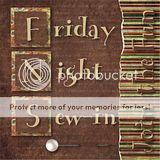My goal was to finish the top of the Garden Windows quilt and my August bee blocks. Well, all that's left on Garden Windows is the border, but in truth I had reached that point a week ago. I did knock out a bee block though!

(Sorry for the less-than-stellar quality. My camera was dead and I was running out the door to work, so I snapped this with my phone.)
Last night a switch flipped in my brain, and I went into productivity mode. I stayed up late and read half of a 300-page book that's been sitting on my nightstand for months. That felt amazing, and gave me some good stuff to think about. This morning (I use that term to loosely define the few hours after I wake up, though it's technically afternoon), my roommate, our friend Alex and I did a yoga dvd in our living room. It wasn't quite my kind of thing, but after doing that it was impossible to sit around and just hang out. (I think I'm going to try going to a local yoga studio tomorrow afternoon!)
So I busted out the graph paper, made a quick sketch, did some math, and whipped out Julie's first block for the Bee in my Bonnet. It felt good! Julie asked for interesting squares inspired by these two quilts. I had been putting these off, waiting for inspiration to strike, and this one just came to me today. I think we create better things using that process, so I'm trying not to force myself too much. If I don't feel motivated to work on something, I know I won't put as much care and attention to detail into it.
ETA: Speaking of bee blocks, pop over to Deanna's blog and see the first finished Bee in my Bonnet quilt!
I'm going to leave you with a somewhat-depressing (sorry!) quote from the book I'm reading, because it really resonated with me. That's all I'll say on the matter. here ya' go:
Many people want desperately to believe, but just can't. They may feel tortured that their faith has evaporated, but they can't will it back into existence. If an autopsy could be done on their spiritual life, the cause of death wouldn't be murder or suicide. It would be natural causes — the organic death of a belief system that collapsed under the weight of experience and reason.








































